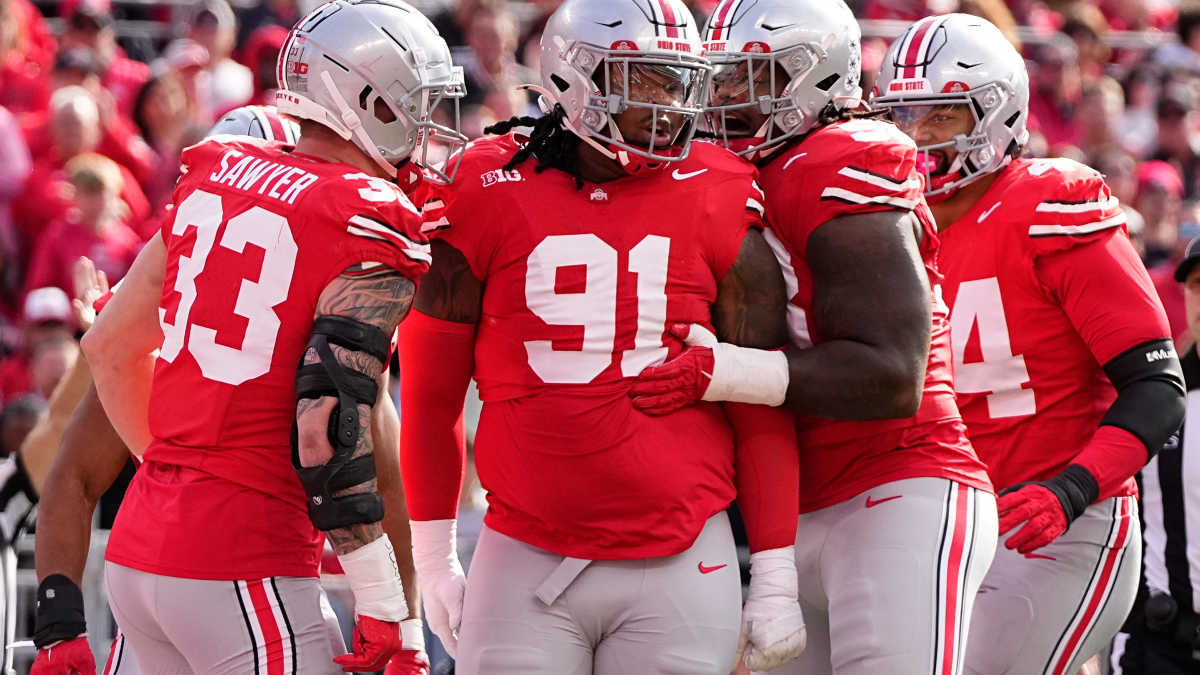Good News; Just Now, Coach Ryan Day Of Ohio State’s Confirmed $20 Million Roster Powers Them to National Championship Victory Over Notre Dame
In what was a battle of contrasting approaches to modern college football, the Ohio State Buckeyes proved their dominance with a 34-23 victory over the Notre Dame Fighting Irish in the College Football Playoff National Championship. The game wasn’t without drama, with Notre Dame closing the gap to just one possession with a little over four minutes left in the fourth quarter. However, Ohio State’s talent, powered by a $20 million roster, ultimately led to their first national championship under head coach Ryan Day, and their first since the 2014 season.
From the opening moments, Ohio State asserted control, with Notre Dame briefly taking a 7-0 lead on a fast-paced first drive. After that initial success, however, the Buckeyes dominated. Notre Dame struggled to gain any traction offensively, managing just 11 yards on their next four drives, while Ohio State extended their lead to 31-7 midway through the third quarter. The talent disparity between the teams was evident, with Ohio State’s four projected first-round draft picks—Emeka Egbuka, Donovan Jackson, Josh Simmons, and Tyleik Williams—showing their superiority on both sides of the ball. In contrast, Notre Dame’s lone first-round hopeful, cornerback Benjamin Morrison, was sidelined for the season due to a hip injury sustained back in October.
This championship was more than just a football game; it was a reflection of the shifting landscape of college football in the era of NIL (Name, Image, and Likeness) and the transfer portal. Ohio State’s roster was built with substantial financial backing, reportedly worth $20 million—by far the highest in college football. This included star quarterback Will Howard, who transferred from Kansas State to Ohio State on a million-dollar NIL deal, and went on to win the offensive MVP of the game. Howard’s performance exemplified the changing dynamics of college football recruiting, where monetary incentives play an increasingly significant role in player decisions.
However, despite this financial edge, Ohio State’s head coach Ryan Day was quick to downplay the role of NIL money in their victory. In post-game comments, he addressed the media, saying, “You can say whatever you want about people talking a lot about how much money guys were making in NIL… that was just because NIL was available. The majority of our team came back. These guys have been here for a long time.”
On the other side of the field, Notre Dame’s approach to building a program centered around tradition, culture, and charitable endeavors. The Fighting Irish’s NIL collective, set up by alumnus Brady Quinn, saw players earn around $1.7 million. While the team’s financial backing was not on par with the Buckeyes, Notre Dame’s legacy and its emphasis on developing a strong team identity under coach Marcus Freeman were clear. In an interview prior to the game, New Orleans Saints legend Drew Brees praised Notre Dame’s approach, saying, “There’s just something about Notre Dame… I think it’s one of the great stories in all of college football.”

Despite the debate surrounding NIL, Ryan Day’s comments make it clear that the financial landscape, while influential, is just one part of the equation. “When that got tagged on us early, there was a lot of pressure put on our players,” Day said, referring to the added attention on Ohio State’s financial commitment.
As the NIL and transfer portal era continues to evolve, college football seems destined to look more and more like professional sports. While some critics call for stricter regulations to curb the influence of money, it remains to be seen whether changes will be made. For now, Ohio State’s $20 million roster stands as a testament to how financial resources can shape the future of college football.



